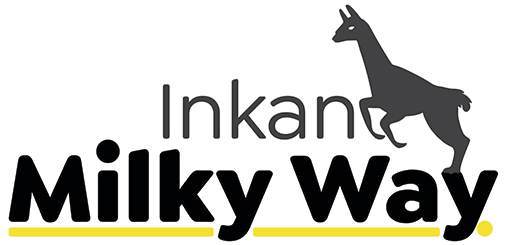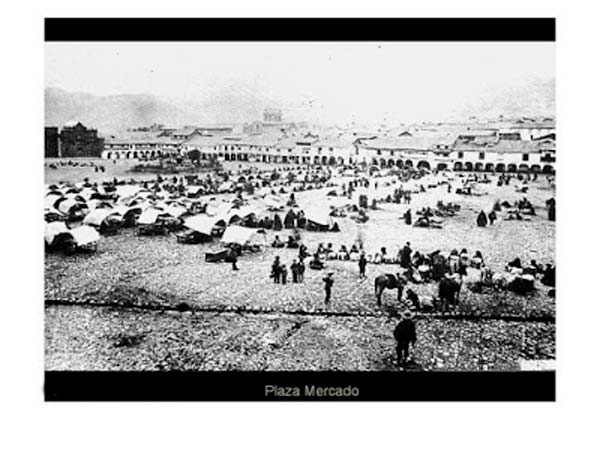
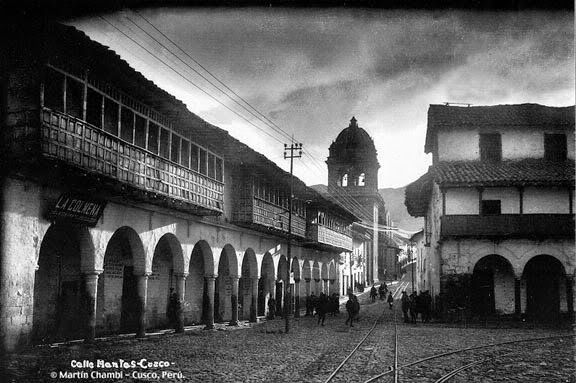
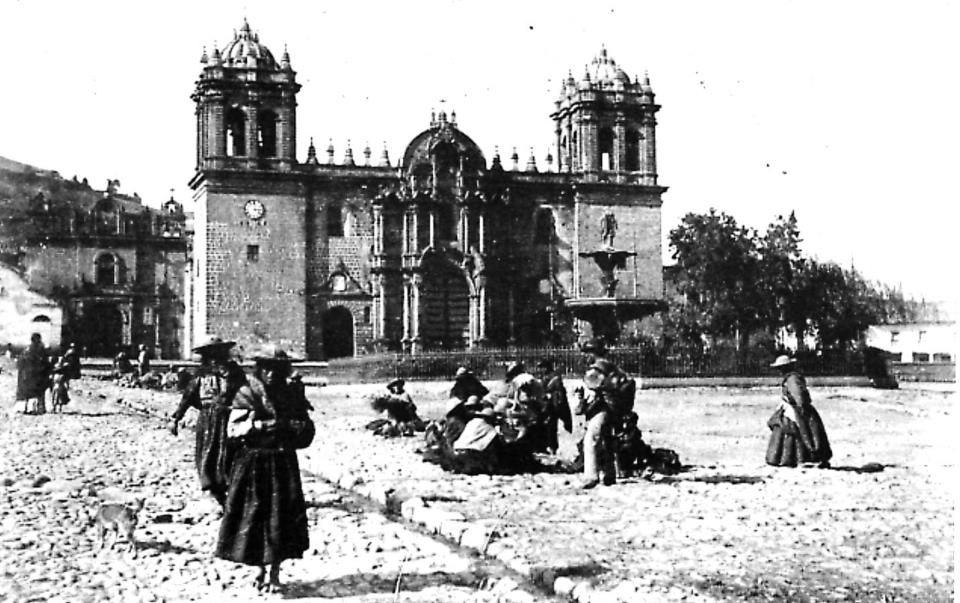
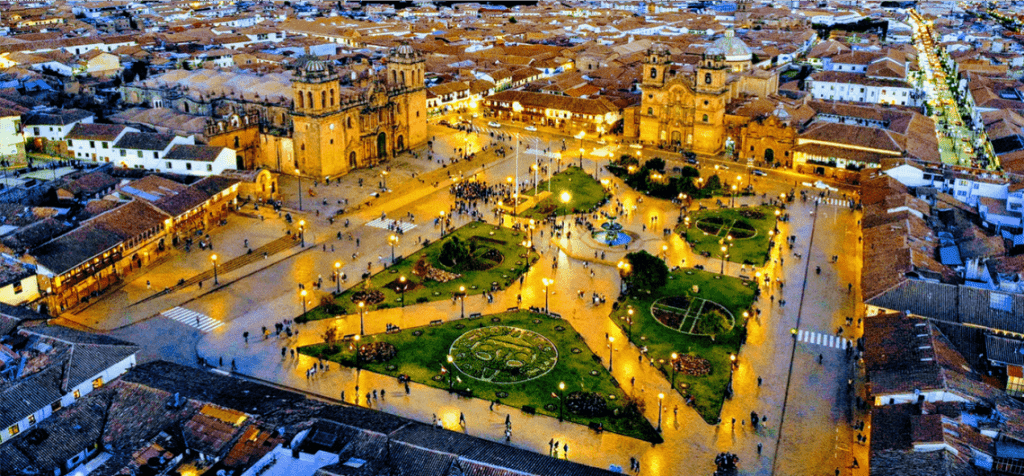
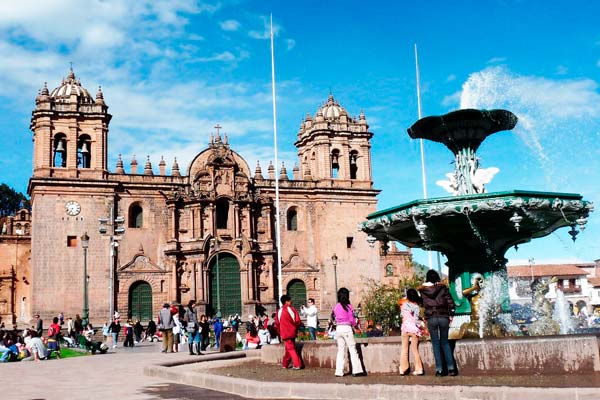
Contents
- 1. History of Cusco´s Main Square
- 2. Description of the Plaza de Armas del Cusco
- 3. What is the purpose of the Plaza de Armas?
- 4. Why is it called Plaza de Armas?
- 5. Must-know historical Facts that happened in this Square
- 6. What can you do at Plaza de Armas of Cusco?
- 7. How to get to the Main Square of Cusco?
- 8. How to get from Cusco airport to the Main square?
- 9. Hotels, Hostales and Hostels near the Plaza de Armas
1. History of Cusco´s Main Square
The Plaza de Armas Cusco rwas the political and economic epicentre for many civilizations before the Spaniards arrived at Cusco city in 1534.
Cusco is a 60 km valley that million years ago used to be a big lake known as Morkill, at some point the water drained out and so it became a very fertile valley where there are 3 rivers: Sipas Pucquio (on the west), Saphy (in the centre – it passes by the centre part of the city next to Plaza de Armas) and Tullumayo (on the east, near the San Blas neighbourhood).
The first human settlements of Cusco valley dates back to the year 1000 BC, it was a settlement founded right at the beginning of the valley, having the Saphy river in the centre.
The political centres of most pre-hispanic cities were the plazas where locals used to do the bartering or product exchanges; The plaza de Armas of Cusco in the Inca period was known as “Auccay Pata” which means “The Most Important Site”, it was a large square (about 250 meters long by 120 meters width) divided into 2 plazas by the Huatanay river surrounded by palaces and temples.
When the spaniards arrived at Cusco city in 1534, they redisigned the large plaza making it into 4 plazas: Plaza de Armas, Plaza Regocijo, Plaza San Francisco and Plazoleta Espinar.
So the current plaza is about 1/3 size from the original pre-hispanic plaza, alhtough still very paramount like it was in the Inca and Colonial period.
2. Description of the Plaza de Armas del Cusco
In the pre-Inca period:
It was a large plaza, surrounded by many palaces and shrines from many civilizations such as the Wari empire and Killque kingdom. Keep in mind that this site was the origin of Cusco as a city, it was a place for mainly exchanging products, meaning that it was a “Mercado” and so is the origin for many cities across the globe.
In the Inca period:
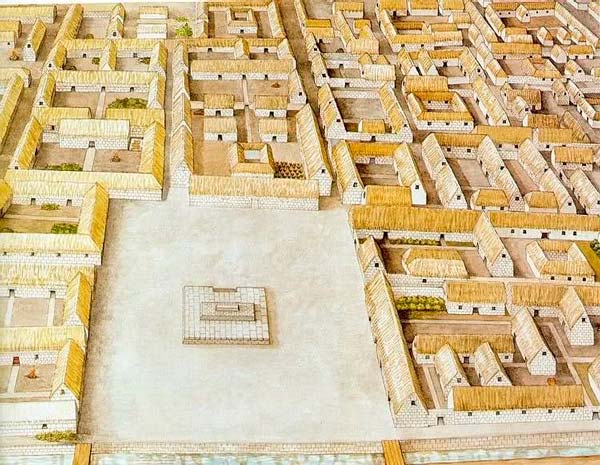
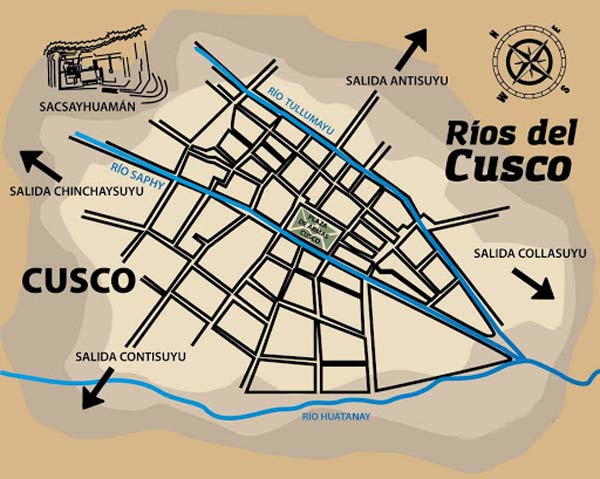
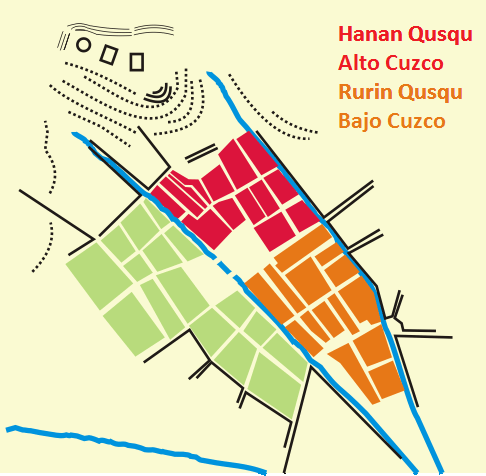
Many of the pre-inca constructions were tore down and replaced by the Inca palaces, such as the Palace of Huayna Qapac or Palace of Wiracocha. There were also other constructions like the Accla Wasi (chosen women house), The Suntur wasi (armory) and the Yachay Wasi (learning house), right in the center there was an “Ushno” a sort of truncated pyramid and many more buildings on the eastern area.
The floor was decorated by sand that was ordered to be brought from the cost by Pachaquteq emperor, it was at least 1 meter deeper form the current elevation or level.
In the Colonial period:
The Spaniards replaced those Inca buildings by churches and colonial houses. The church of the Jesuit replaced the palace of Huana Qapac, the convent of Santa Catalina replaced the Accla Wasi, a colonial house replaced the Suntur Wasi (this colonial house nowadays is the Paddy’s Irish pub), the Catedral replaced the palace of Wiracocha, a group of colonial houses replaced the Yachay Wasi (in one of those colonial houses you can buy your train ticket to Machu Picchu) and finally, the truncated pyramid or “Ushno” was replaced by the water fountain.
Nowadays:
It still keeps a lot from the Inca period, you can see many Inca walls that were used as foundation stones for the Spanish buildings. All the colonial buildings such as churches do still exist nowadays.
Cusco as many other tourist destinations is not far away from globalization, therefore there are many restaurants, bars, discos, etc, and also McDonald’s, KFC, Paddy’s Irish pub and other international food and beverage brands that are located around the Plaza de Armas.
3. What is the purpose of the Plaza de Armas?
In the pre-hispanic times:
- A place where locals could exchange their products – there was no money or currency in the Inca period.
- The most important ceremonial was held in this plaza, for example, the Solstice of Winter – the 21st fo June, which is the shortest day; This festivity is known as Inti Raymi or the Sun festival.
- A place for big political decision celebrations.
- A place where big banquettes would take place.
- A place were marriages for the nobles were celebrated.
In the Colonial period:
- It was still kept as a place for exchanging products, what we call nowadays “Mercado” but money became part of this socio-economic event.
- A place for catholic celebrations such as the Corpus Christi.
- A military place for gathering all Spanish soldiers.
- A place for public executions.
Nowadays:
- A political place for many celebrations, like the 28th of July, the independence day of Peru.
- It is still an indigenous ceremonial place for the Sun Festival, this event was prohibited in the colonial period but restored at the beginning of the 20th century.
- It is still a place were many catholic celebrations happen.
4. Why is it called Plaza de Armas?
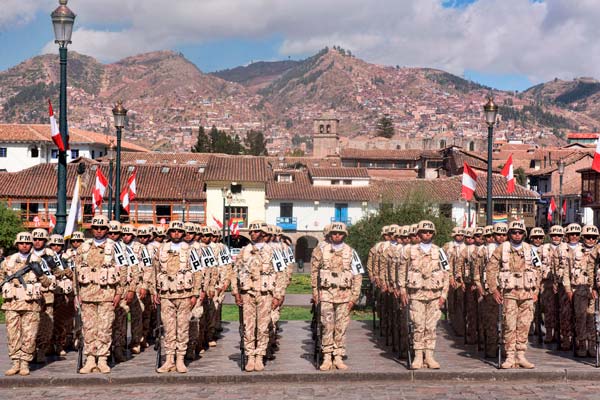
“Plaza de Armas” literally means Weapons Square, this means that back in the colonial times this place was a meeting point for the Spanish soldiers and the weapons. That is the reason why we call it Plaza de Armas, and it is the same reason for all Plaza de Armas´around the world. As simple as that!
5. Must-know historical Facts that happened in this Square
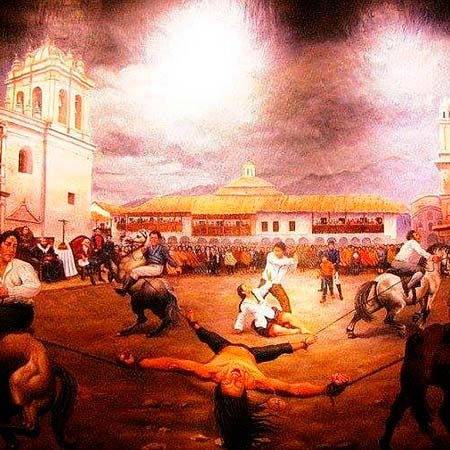
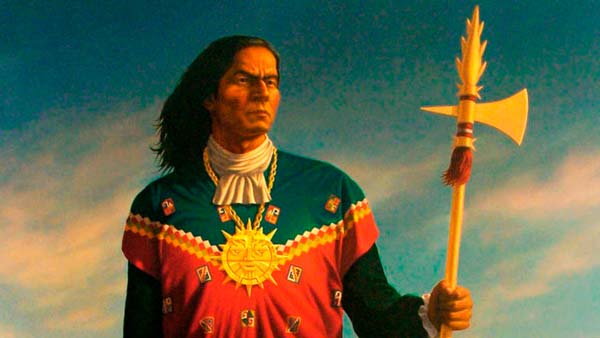
There are 2 historical facts that took place here and changed the destiny of millions of nations in Cusco, Peru and South America.
- The execution of Tupac Amaru I in 1572: He was the last surviving Inca king living in Vilcabamba, he was a rebel and never agreed with the Spanish domination. He was captured in 1572 and brought to Cusco city to be executed, he was beheaded.
- The execution of Tupac Amaru II in 1771: He was a real descendant from Tupac Amaru I, he was quartered and thrown by 4 horses, then beheaded. His family also was completely exterminated therefore nowadays there is no real descendant noble blood family in Cusco or anywhere in the world.
6. What can you do at Plaza de Armas of Cusco?
Visit the Water Fountain or Pileta
Take a photo with the most visited water fountain in Peru donated by New York City, it cast built-in 1870 in the Bronx New York by Janes, Kirtland & Co and designed by a Frenchman known as J.P. Victor Andre and finally shipped to Cusco city in 1872. There are 2 water fountains with the same design, the other one is in Central Park in New York City. The reason is very simple: New York was the centre of Pangaea, “Cusco” derives from “Qosqo” in the Quechua language which means the centre the universe, let´s say both cities are the centre of something.
The old colonial water fountain cast during the colonial period was replaced by the current New York water fountain.
Check the History of the Water Fountain by Pictures
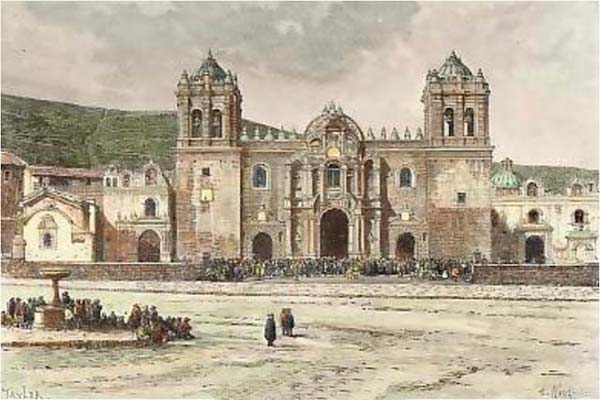
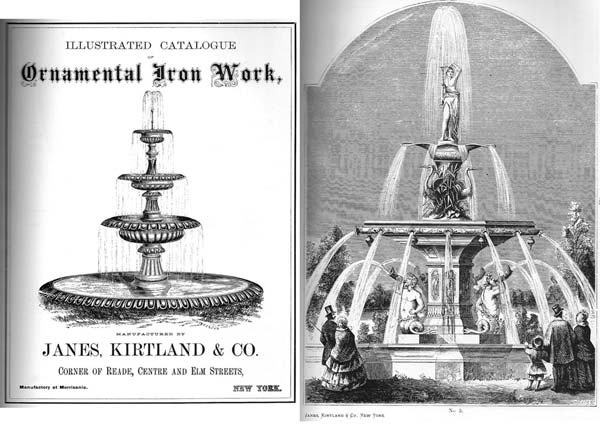
Right img: Janes & Kirtland is the company that designed the water fountain for Cusco & New York city.
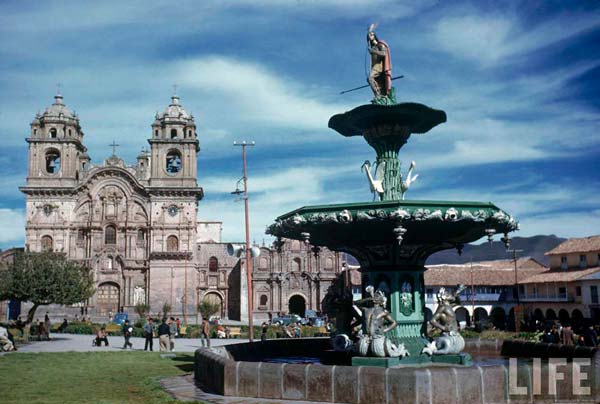
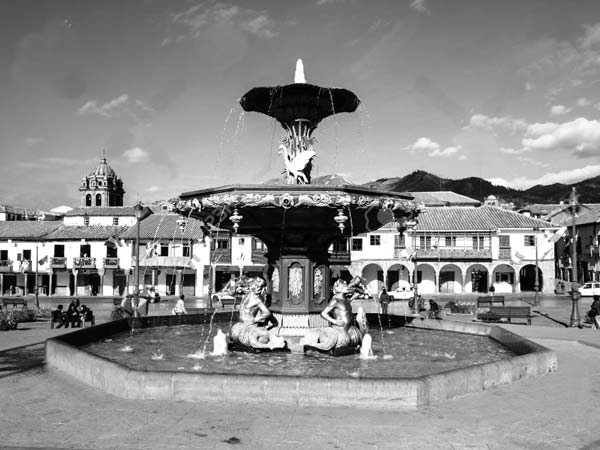
Right img: In 1950 there was an earthquake that unfortunately destroyed the “Chief Kisco” statue, since then there was nothing on top of the water fountain until 2011.
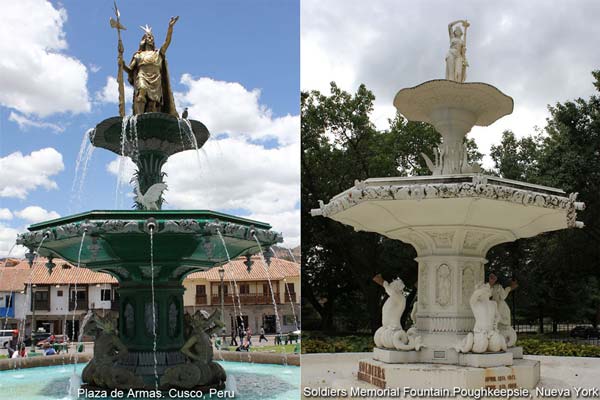
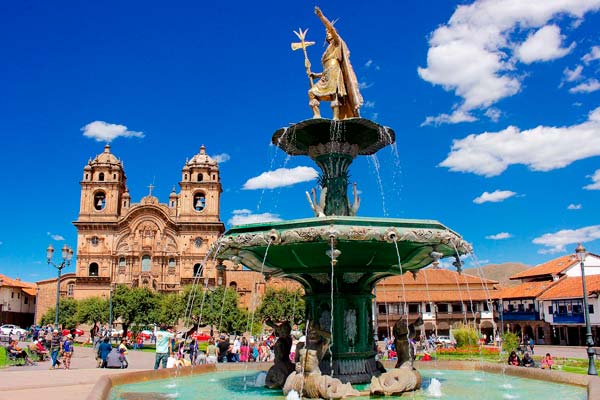
Right img: You can see the New York water fountain with a different statue. Since there was nothing on top of the water fountain starting 1950 until 2011, the local authorities decided to cast an Inca statue in Cusco, dedicated to Manco Capac emperor and put it on top of the water fountain in 2011.
Visit the Churches around the Main Square
There are two churches located in the Main Square, the Church of the Jesuit and the Cathedral, both of them are worthy to be explored from the interior to learn more about the colonial history of Cusco city.
They are open every day from 8 am until 5 pm, entrance fee for any church in Cusco is about 5 USD.
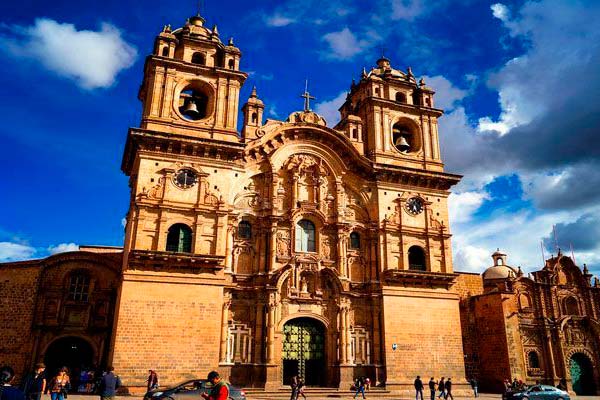
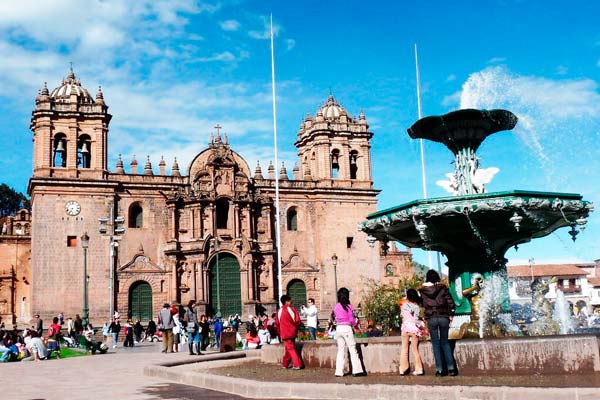
Visit the Museums that are close to the Main Square
Check out the Inka museum, located next to the Cathedral, at this museum, you will learn a lot about the Inca period and also pre-Inca societies, don´t worry about the price, it should be less than 5 USD.
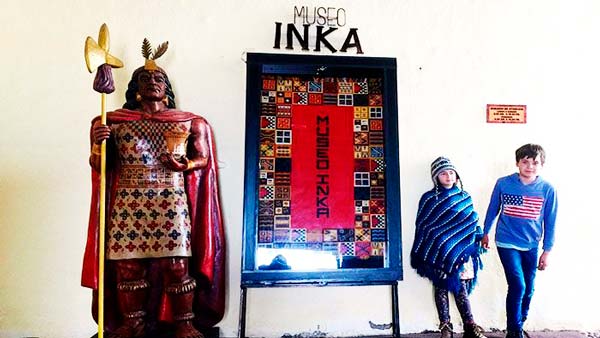
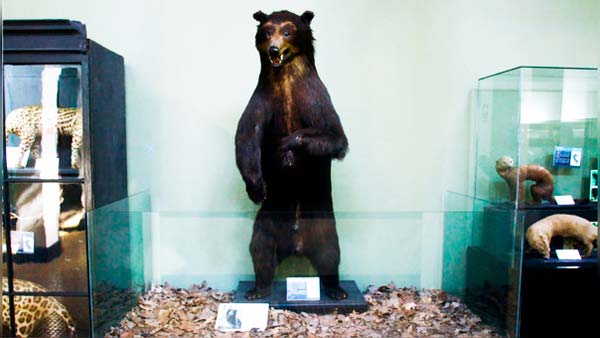
Another museum that we totally recommend even though it is not a touristy museum but we love it, it´s called Museo de Historia Natural, it is next to the church of the Jesuits, at this museum you will learn about the fauna from the coast, the Andes and the Amazon, consider that all animals are dissected.
Have some Local Food at Traditional Restaurants in the Main Square
Cusco is a city where culinary is one of the reasons why tourists visit this ancient city, we recommend visiting any restaurant located in the main square with a balcony so that you can have an awesome overview to the Plaza. You can try Cafe Plaza or Inka Grill, both restaurants offer traditional local food at a decent price.
Do a Free Walking Tour Cusco recommended by 3500 reviews
If you wish to explore Cusco city center better, join our daily free walking tour, we start from Regocijo square, we will show you all about the Plaza de Armas and other must-see attractions, please book and check our meeting point below:
7. How to get to the Main Square of Cusco?
If you are anywhere in Cusco city centre, getting to the main square will be fast, safe and easy, do it on foot. If you are not in the city centre, take a taxi, pay an average of 2 USD for a 10 minutes ride.
Check the google maps below:
8. How to get from Cusco airport to the Main square?
By Taxi:
If money is not a problem for you, then take a taxi from INSIDE(inside the building and patio) the airport of Cusco, they will charge you about 20 USD, they are safe enough, and the drivers speak Basic English.
Our recommendation is to GET OUT from the airport, Get Out of the Patio of the Airport until you see an Avenue, just get to the Bus stop (don´t worry where exactly is the bus stop, everyone can see it, you will notice), at this Bus stop take a Taxi, pay 5 USD maximum or 10 to 15 Soles, no more than that, you need to negotiate the prices, they accept USD, if you have Soles would be much better.
The taxi ride will take about 10 to 15 minutes.
Remember Cusco is a Safe City, 99.99% of taxi drivers are safe regardless you take the taxi inside or outside the airport, don´t worry!
To consider: There is no official colour for taxis, so just take anyone!
By Colectivo or Public Transportation
Just get out from the Airport to the Avenue, Get to the bus stop and take CORRECAMINOS Colectivo (they are Big Blue Buses), pay 0.80 cents (almost 1 Sol), if you have some luggage, pay for the luggage 0.80 cents per luggage, Get off at ALMAGRO bus stop, you can walk from it to the Plaza de Armas (3 minutes on foot).
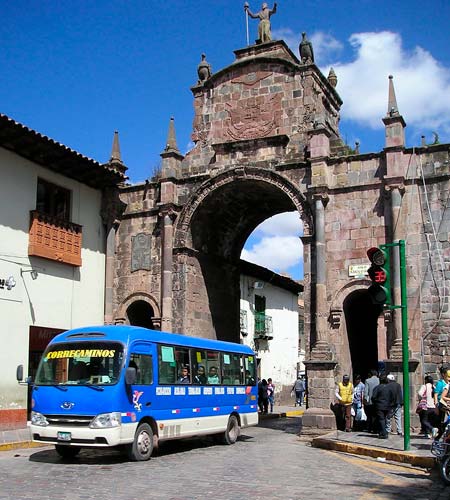
Note: You should not pay for the luggage, but it is a matter of consideration, especially if you have a big luggage, be considerate!
9. Hotels, Hostales and Hostels near the Plaza de Armas
Hotels:
- Hotel Plaza de Armas
- El Virrey Boutique
- Posada Villa Mayor
- Yabar Hotel Cusco Suite
- Loreto Hotel Boutique
- Hotel Plateros
Hostal:
A Hostal is an accommodation category in Peru, and means a small hotel with limited facilities; we recommend booking your accommodation in a hostal if you travel with your family.
Hostels:
Staying in a hostel, generally means that the accommodation is super cheap, almost all the businesses that exist in the Plaza de Armas have higher prices, which is why there is no hostel in the Plaza de Armas. If you want a hostel you can find it in the historical center, don´t worry, they are still located very close to the plaza de armas.
